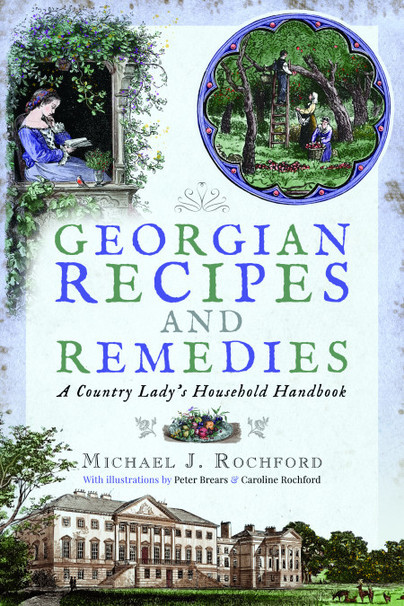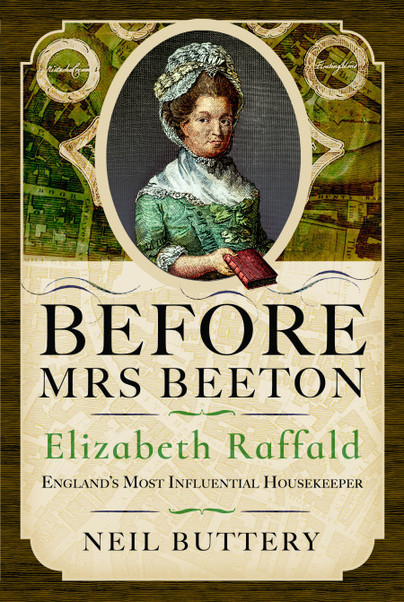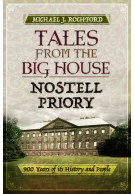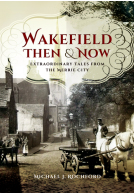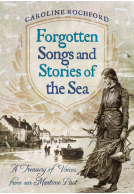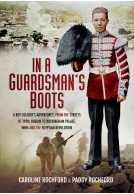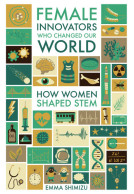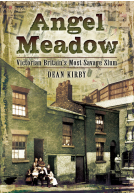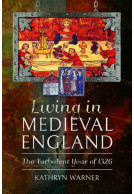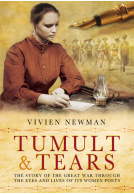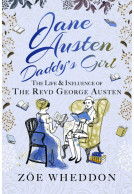Georgian Recipes and Remedies (Paperback)
A Country Lady’s Household Handbook
Imprint: Pen & Sword History
Pages: 240
Illustrations: 50 black and white
ISBN: 9781526727299
Published: 3rd June 2020
Last Released: 15th February 2024
Star Review!
'An endlessly entertaining cookbook, with added remedies for all that ails you' - Jane Austen's Regency World Magazine
(click here for international delivery rates)
Need a currency converter? Check XE.com for live rates
| Other formats available | Price |
|---|---|
| Georgian Recipes and Remedies eBook (28.3 MB) Add to Basket | £6.99 |
Discover the recipes for Mrs Rooke’s Very Good Plum Cake and Lady Harbord’s Marigold Cheese. Learn how to preserve gooseberries ‘as green as they grow’ and make Sir Theodore Colladon’s Peach Flower Syrup. Feast on Lady St Quintin’s Dutch Pudding and Mrs Eall’s Candied Cowslips. Then wash it all down with Lady Strickland’s Strong Mead or some Right Red Dutch Currant Wine.
These are just some of the delightful Georgian recipes found in the receipt books of Sabine Winn, the eighteenth-century Swiss-born wife of Sir Rowland Winn, 5th Baronet Nostell of the impressive Palladian mansion, Nostell Priory in Yorkshire. Using centuries-old cookbooks, newspaper clippings, old family recipes and contributions from noble friends, Lady Winn created a wonderfully eclectic collection of mouth-watering dishes that are presented in this new volume for modern readers to enjoy.
Mistrustful of English doctors, Sabine’s receipt books also contain scores of remedies for a whole series of complaints, such as: The Best Thing in the World for Languishing Spirits or Fatigue after a Journey; Mrs Aylott’s Excellent Remedy for Colic; Aunt Barrington’s Cure for Pleurisy; An Approved Medicine to Drive the Scurvy or any other Ill Humour out of a Man’s Body; and A Diet Drink to Cure all Manner of Hurts and Wounds.
Here, helped along by the pleasing and informative drawings and decorations of Peter Brears and Caroline Rochford, (Michael J. Rochford) reproduces the manuscript recipe books of Lady Sabine Winn...the recipes are not messed up by modern intrusion, save that the ingredients have been rationalized and tabulated, and there is plenty to whet the whistle or quell stomachic yearnings...should you need Mrs Hunter's egg salve for boils, or how to use a dry bean to draw a splinter or thorn from any part of the body, this is the book for you. Excellent stuff.
Petis Propos Culinaries
A lively and interesting delve into a typical household book of the time, with various recipes, both culinary and medicinal.
Tastes Through Time website
The recipes look fun and the ingredients for the most part accessible.
The liqueur brandy recipes look ideal as Christmas presents and one or two of the remedies such as those for wasp stings or splinters may be useful, although the effectiveness seems doubtful. However I would be extremely reluctant to attempt most of the remedies, in particular the anti-sickness pills containing steel filings, or the toothache paste consisting of ashes from a tobacco pipe and brandy…..
For anybody planning a different or themed dinner party this would be a wonderful source book, or simply out of interest into the development of medicines and the thinking behind some of the ingredients in the remedies.
Rating: 5 out of 5 stars
Amazon Customer, Lynski
Georgian Recipes and Remedies is a great walk down the lane and into the English Georgian period kitchen and apothecary. I tried some of the recipes (with some changes for the times), and they are great fun! But the really useful part of the book are the remedies--some still used by modern medicine: peppermint for the stomach; ginger for sea sickness, ect. It is fun to read it and even more fun to try to duplicate the recipes. The book was featured in The Jane Austen's Regency World magazine and many Jane Austen Society members are trying to recreate the food recipes.
Click here to view recipe feature
Donna Fletcher Crow
I found the herbal use in the recipes intriguing, creative, and sometimes delightfully odd. There are also scores of remedies using herbs and various natural compounds. The book also provides an interesting slice of 18th century Georgian life in England.
American Herb Association Quarterly
'Regency Recipes' as featured by
Jane Austen’s Regency World, January/February 2021
Overall, this book gives a flavour of what life was like in the late Georgian era for those who had the money to indulge in fine dining. A very entertaining book, well written, and worthy of any cooks bookshelf. Highly recommended.
Manchester & Lancashire Family History Society newsletter, October 2020
Click here for the full review (page 7)
Listed in competition feature
Yorkshire Reporter, September 2020
An endlessly entertaining cookbook, with added remedies for all that ails you.
Jane Austen's Regency World Magazine
Rating: 5 out of 5 stars
NetGalley, Elizabeth Lefebvre
"Discover the recipes for Mrs. Rooke's Very Good Plum Cake and Lady Harbord's Marigold Cheese. Learn how to preserve gooseberries "as green as they grow" and make Sir Theodore Colladon's Peach Flower Syrup. Feast on Lady St. Quintin's Dutch Pudding and Mrs. Eall's Candied Cowslips. Then wash it all down with Lady Strickland's Strong Mead or some Right Red Dutch Currant Wine.
These are just some of the delightful Georgian recipes found in the receipt books of Sabine Winn, the eighteenth-century Swiss-born wife of Sir Rowland Winn, 5th Baronet Nostell of the impressive Palladian mansion, Nostell Priory in Yorkshire. Using centuries-old cookbooks, newspaper clippings, old family recipes and contributions from noble friends, Lady Winn created a wonderfully eclectic collection of mouthwatering dishes that are presented in this new volume for modern readers to enjoy.
Mistrustful of English doctors, Sabine's receipt books also contain scores of remedies for a whole series of complaints, such as: The Best Thing in the World for Languishing Spirits or Fatigue after a Journey; Mrs Aylott's Excellent Remedy for Colic; Aunt Barrington's Cure for Pleurisy; An Approved Medicine to Drive the Scurvy or any other Ill Humour out of a Man's Body; and A Diet Drink to Cure all Manner of Hurts and Wounds."
Because during a pandemic, once you get sick of making modern food, how about taking a trip back in time?
A brilliant collection of recipes, receipts, restoratives and remarkable cures from the Georgian era. Many of the recipes involve a large quantity of wine, porter, ale or rum, and one wonders if this is the basis for these "cures", to get the partient as inebriated as possible. Many recipes contain ingredients of which I have never heard, such as "tutty". It's a joy to read, many of them are "laugh out loud", and a joy to read out to your friends and family. It's a brilliant, hugely entertaining book.
Books Monthly
A fascinating read a look at history add to that a book of recipes. Learning about the times the food that was cooked a fact filled wonderful look at the kitchens the supplies of the day. Really enjoyed
NetGalley, Abby Siverman
This would be a great addition to any cooking book library.
For the Love of Books
The preface and notes provide you with an understanding of how the recipes have been written with some background behind some of the ingredients.
It provides a great basis that could be used for a themed dinner party; the ingredients for the food recipes are easy to source. As long as you have a lot of mace, butter, eggs and sugar you can make the majority of these recipes.
I fully recommend this book.
This book was a very good read and would be liked by food experts or those that like food history. I would recommend this book.
UK Historian
Fascinating book. There's nothing I love more than leafing through antique recipe books. The author did a great job of introducing the country lady in question, as well as updating her recipes for the modern reader.
NetGalley, Tracy Jacobson
very enjoyable.
Rating: 5 out of 5 stars
NetGalley, Brandy Gray
Fabulous! I feel like I'm going back in time whenever I open this book. Fun way to learn about Georgian times.
A fun and interesting read for those who are curious about what people in the Georgian era ate, how they cooked, and how they managed their homes.
NetGalley, Aimee Sims
Rating: 5 out of 5 stars
NetGalley, Anna Maria Giacomasso
I found this book fascinating as I'm interested in old remedies and I like ancient cookbooks.
It's well written and I think it can be appreciated by anyone interested in these two topics.
Highly recommended.
Rating: 5 out of 5 stars
NetGalley, Annie Buchanan
These are a varied and whimsical lot of recipes and clippings. The recipes are well worth a perusal and include: excellent remedy for swelled legs and a relaxed stomach, Sir Robert Ford's drink to sweeten the blood, syrup of steel to prevent miscarriage, and so many more.
As the author states (emphatically), these are reproduced for historical interest and NOT to be used in place of medical advice (a fair number of these will straight up wreck you/kill you/cause essential bits of you to fall off). I elso enjoyed reading the history of the 5th Baronet Nostell and his lady wife, Sabine d'Hervart, from whose recipes and stillroom book this volume was drawn. They were remarkably awful people, abusing small animals for their own amusement and even torturing an elderly guest to the ruination of her health. *yikes* Whilst I don't think I'd have cared to be a regular friend in their circle, reading the book does give a fascinating glimpse into an otherwise hidden bit of everyday history from the Georgian period.
As a historical insight, I found it fascinating and devoured it cover to cover. This was well worth the read, and for recreators and SCAdians (and the like) this would make really great source material.
Five stars. Weirdly fascinating.
Michael J. Rochford’s Georgian Recipes and Remedies is a great read for history lovers or anyone interested in food, herbal cures, and unusual recipes... I am especially fascinated by the remedies section with its odd and often dangerous ingredients. I wouldn’t recommend trying any of these cures! There are cures for every single ailment you can think of! These remedies feature many strange and specific ingredients like fine Peruvian bark, castor oil, gallon of milk from a red cow, camphor, and even turpentine! “To cause an easy labour” features weird items like rosemary flowers, white wine, and brown sugar candy. There are also lozenges for heartburn which contain oyster shells while “for a green sickness” mixes aloe with rusty steel filings!
NetGalley, Rebecca R
The recipe names are interesting and often funny. I loved reading about “Lady Strickland’s Strong Mead” and “Aunt Dawg’s Wash for the Teeth.” I also like that the recipes are in the original dialect with instructions like “chap them very small” and “boyling water”.
This was a fun time capsule to read. It's full of the author giving some historical relevancy so we can understand things and who it was who owned this, but more about the different food and medical recipes. Some of them were quite horrifying in both departments. But, it was an interesting read and, to be honest, I saw some food recipes that didn't sound half bad!
NetGalley, Caidyn Young
A fascinating collection of original Georgian recipes and remedies, including the ones that we know today are rather dangerous and definitely should not be made at home. The author explains the notebooks kept by women - even those who would rarely make the recipes themselves, and the state of cooking in the Georgian time period.
NetGalley, Rebekka Steg
This was quite a fascinating read. It started off with a history of the Georgian times. It gave some yummy sounding recipes (mincemeat pie with real meat) that I am quite eager to try. This book also gives home remedies that were made in that time period. I don't advise trying them but they are still intriguing. A fun book to look through over all.
NetGalley, Vonda Svara
This was a unique book. It was inspiring looking at the recipes and remedies and there's a few that I would love to try, such as the orange cheese cake.
NetGalley, Kristin Jørgensen
What a great book about Georgian culinary and medicine.
NetGalley, Zoe Pollock
I really enjoyed that Rochford included Sabine Winn's biography at the beginning of the book. Sabine is our hostess and collected the recipes and remedies that follow from friends, doctors, newpapers, cookbooks and her native land of Switzerland. She was the wife of Sir Rowland Winn, 5th Baronet Nostell and her life is worthy of a biography itself. Rochford has also converted measurement etc. so we as readers can have a go at creating some of these dishes, though he does mention that some will be impossible to recreate due to ingredients we don't use in food now but are included for our amusement. Though included is a recipe for mince pie including meat that I may have to try out this coming festive period, my mince pies will contain mincemeat.
Rating: 5 out of 5 stars
NetGalley, Denice Langley
this is without a doubt one of the most unique "cookbooks" I have read in awhile. I started collecting cookbooks when I was first married and no one could tell me how to cook a pumpkin. I've traveled around with my military husband for over 40 years, adding to my collection along the way. But I definitely did not have any books to match the pure enjoyment I got from reading this book. Anyone who enjoys their time in the kitchen will love this book. It is about so much more than cooking!!!!
Rating: 5 out of 5 stars
NetGalley, Rebecca Hill
You might want to eat before you read this book - because so many of the recipes in here sound scrumptious! Sabine Winn, leaves behind a treasure trove of recipes and remedies. As the book states, many of the remedies are dangerous, so these are NOT to be attempted at home, however, they are fascinating to read - as it gives an insight into the time and the "healing" that was going on at the time.
The book begins with a nice little history - and then dives into the recipes and remedies. I am going to admit, I was not really sure what to expect, but I found myself giggling at some of the ingredients, as well as some of the remedies and what they were used for. Sometimes the cure is actually worse than the disease!
For the recipes - there are so many that I want to try! I am a foodie, and you have to wonder how different the recipes will be today, as compared to their original baking (and I am sure ingredients that were not added to the recipe), as well as baking methods.
I love that this was broken into sections, so you have like items together - and ohhh you can almost smell some of them from the pages! If you enjoy cooking, or trying new things, you need to check this out!
Rating: 5 out of 5 stars
NetGalley, Ily Renfroe
Georgian Recipes and Remedies is a wonderful illustrated book containing some great recipes that I cannot wait to try out. It is well written and concise. It is definitely entertaining and a must have if you enjoy collecting Vintage books.
I am definitely buying this book in hardcover once it comes out in print. This is a must have!!
Rating: 5 out of 5 stars
NetGalley, Tanja Ley
A very pleasing volume to read through, I found this book extremely informative. Of course the recipes are the highlight of this very useful and beautiful book. Together with the background knowledge, the included pictures and notes it's pure fun to explore.
Rating: 5 out of 5 stars
NetGalley, Martin Dowden
Michael J Rochford has in the past written a book about Nostell Priory, but here he expands upon that somewhat with this receipt book. I must admit quite recently that I was surprised when someone claimed that there was a misspelling in a 19th Century classic because the text said receipt instead of recipe. I thought everyone knew that this was quite common and only really changed near the end of the 19th Century into recipe for universal usage. So, we start off here with a short biographical piece on Sabine Winn, and then we are taken into a selection of recipes from her receipt books. There are some other remedies in the second section here, added from some later books, which take us into the early 19th Century but the pieces here are all Georgian.
As you can see with the recipes sugar is used a lot and was gradually coming down to a more affordable price, although not quite cheap enough yet for the poorer classes. As is pointed out by the author not everything we are shown in this book can be done these days, as for instance you would need a license for those items which need a distillery of some sort, some ingredients you can no longer realistically get, and some of those used in the remedies section are dangerous in use as described here, as well as illegal to own. So please be careful if making anything from this, use your intelligence and common sense, and if in doubt do not do.
The first section, which is that on food will obviously be the most interesting for readers, and although as I write this I have not tried any of the items I will admit that there are some in the cakes, biscuits and bread section that I will be trying. Of course you will need to use your own experience when it comes to heating temperatures as they didn’t exist as such when this was written, and also you may wish to slightly alter the quantities of ingredients, depending on how much you intend to make. This first section thus gives recipes for all manner of baked goods, form starters and main courses, through to desserts and even drinks.
The second section gives us remedies, from sore throats and strains, through to colds, consumption and other ailments. This gives us an idea of what people took for illnesses, at a period when even the medical establishment did not really know what worked and what didn’t. There are even supposed cures for the plague here. Some of these remedies may still be of use though, such as a type of cough drop which has ginger in it, which as I think we all know, ginger is quite warming and comforting on the throat.
There is a glossary here, along with photos and illustrations, as well as even a couple of seating plans that Sabine did for dinners. In all then this should satisfy those who are mainly into cooking and want to try things our ancestors ate, although even if you do not try anything this still makes for an interesting book.
About Michael J. Rochford
Michael J. Rochford holds a BA (Hons) and a Master’s degree through the University of Leeds, having studied at Bretton Hall campus in the heart of the Wakefield countryside. He was born at the old Manygates Maternity Hospital and married at Wakefield Cathedral, having worked at ‘Prophet Wroe’s’ Wrenthorpe Mansion, Melbourne House. Michael runs a history research company, Heir Line Ltd (www.heir-line.co.uk), with his wife Caroline, and has edited several published titles on Victorian and military history. He is also a member of the Yorkshire Archaeological Society.
About Peter Brears
Renowned Yorkshire-born illustrator Peter Brears is a prolific writer of history books (All the King’s Cooks, 2011, Traditional Food in Yorkshire, 2014), a museum consultant, historic house expert, and TV food historian (If Walls Could Talk: The History of the Home, 2011).
About Caroline Rochford
Caroline Rochford, the wife of Paddy’s grandson, is a Yorkshire-born author, having written Great Victorian Inventions (2014) and Great Victorian Discoveries (2015), both published by Amberley. She and her historian husband, Michael J. Rochford, are directors of the genealogy company Heir Line Ltd (www.heir-line.co.uk), and both were fascinated to receive Paddy’s long forgotten papers in 2010.
Before Mrs Beeton Elizabeth Raffald, England's Most Influential Housekeeper (Hardback)
The great Elizabeth Raffald used to be a household name, and her list of accomplishments would make even the highest of achievers feel suddenly impotent. After becoming housekeeper at Arley Hall in Cheshire at age twenty-five, she married and moved to Manchester, transforming the Manchester food scene and business community, writing the first A to Z directory and creating the first domestic servants registry office, the first temping agency if you will. Not only that, she set up a cookery school and ran a high class tavern attracting both gentry and nobility. She reputedly gave birth to sixteen…
By Neil ButteryClick here to buy both titles for £35.99







